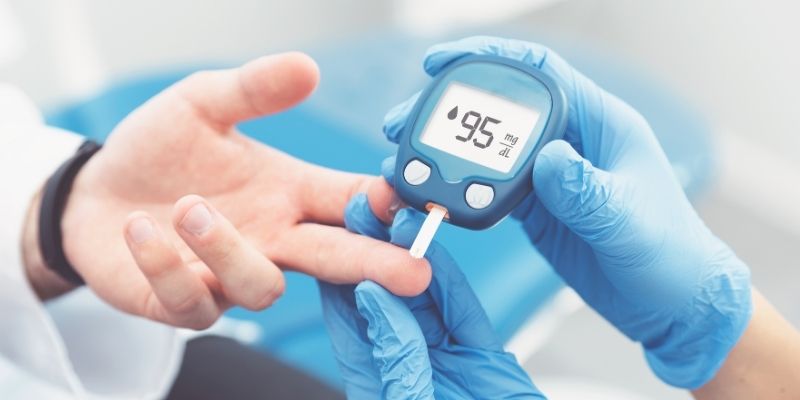Comprehensive Guide to Treating Insulinoma
Insulinoma, a rare pancreatic neuroendocrine growth, produces insulin and lowers blood sugar. Because the symptoms might be fatal, low blood sugar can affect quality of life. Proper insulinoma treatment is essential to managing symptoms and avoiding issues. This page discusses insulinoma, its diagnosis, treatment options, and management. Patients and doctors will get a complete picture.

Understanding Insulinoma
Small pancreatic beta-cell growths generate insulinomas. These cells produce insulin. These single or multiple tumours are usually innocuous, although some are malignant. Insulinomas are associated with hereditary diseases like Multiple Endocrine Neoplasia type 1, although their aetiology is unknown. Insulinomas may induce dizziness, confusion, excessive perspiration, and even fainting due to hypoglycemia.
Physical exams and lab testing are often used to identify insulinoma. Doctors assess hypoglycemia symptoms and collect blood to measure glucose and insulin. Imaging techniques like CT scans and MRIs may detect pancreatic growth. After placing a patient, create a customized treatment plan.
Symptoms and causes
Most insulinomas are produced by pancreatic beta cells producing too rapidly or too much insulin. Hypoglycemia, or low blood sugar, may result from overproduction in several ways. Insulinomas are tiny pancreatic islet cell tumours. Scientists have uncovered certain factors that may increase their likelihood, but they are currently investigating.
Causes:
- Insulinomas are more common in people aged 40–60. Insulinoma is more common in women, although the reason for this is unclear.
- Family History: Endocrine cancers in the family increase insulinoma risk. Insulinoma patients' families may be advised to have a genetic test to determine their risk.
- Pancreatic Disorders: People with various pancreatic diseases or tumours may develop insulinomas because their pancreas may not perform correctly.
- External variables: Some research suggests external factors or circumstances may contribute to neuroendocrine tumours like insulinomas.
Too much quantity of insulin causes low blood sugar, which is the primary symptom of insulinoma. These symptoms might appear fast and vary in strength. Fasting or exercise might trigger them.
Insulinomas symptoms:
- Low blood sugar may damage brain functions, making it hard to concentrate.
- Sweating is a typical response to low blood sugar. You may be apprehensive or concerned.
- Weakness: Hypoglycemic episodes may leave patients exhausted and unable to perform everyday duties.
- Rapid Heartbeat: Low glucose releases adrenaline, which may cause palpitations or a rapid heartbeat.
- When brains don't receive enough glucose, people may faint or dizzy. Brains need constant blood sugar for energy.
In severe circumstances, untreated hypoglycemia may induce seizures, loss of consciousness, and death. These indications must be noticed quickly for optimal management and therapy.
Diagnosing Insulinoma
Clinical examination and scientific testing are needed to diagnose insulinoma. Healthcare providers start with a medical history and physical. They will inquire about hypoglycemia symptoms and patterns in these occurrences.
Lab tests
Blood tests are needed to confirm insulinoma. Patients with hypoglycemia have their blood glucose and insulin levels checked. When blood sugar drops too low, elevated insulin levels indicate insulinoma. People do the 72-hour fast test, fasting under medical supervision until hypoglycemia appears. Regular blood tests evaluate glucose and insulin levels.
C-peptide, produced when proinsulin is converted into insulin, may also be tested by doctors. High C-peptide levels during hypoglycemia indicate an insulinoma.

Imaging studies
Imaging examinations are done to discover pancreatic growth when lab testing suggests an insulinoma. CT, MRI, and EUS scans are popular imaging methods. These screening technologies help physicians detect pancreatic tumours.
When routine imaging fails to identify the growth, octreotide or PET scans may be employed. Advanced imaging uses radiolabeled compounds to bind to neuroendocrine tumour receptors, making them easier to view.
Different Insulinoma Treatments
Surgery to remove insulinoma is the most frequent treatment. Most benign tumours are surgically treatable. Treatment plans must be custom-made to each patient's tumour size, location, and cancer status.
Surgery to remove
Surgery removes insulin-producing growth and a border of healthy tissue. The size and location of the pancreatic growth determine the procedure. A partial pancreatectomy may eliminate the tumour if it is small and isolated.
A Whipple procedure, or pancreaticoduodenectomy, may be required for more extensive or metastasized malignancies. Parts of the pancreas, small intestine, and bile duct are removed in this major operation.
Healthcare Management
Medical therapy is crucial for managing symptoms when surgery isn't possible, such as when the tumour is malignant or has spread. Hypoglycemia medications like Diaz oxide may inhibit pancreatic cells from producing insulin and boost blood sugar.
An alternative is octreotide. Somatostatin variants prevent pancreatic cancers from producing insulin. People who can't undergo surgery or become ill again after surgery may use this drug to stabilize blood sugar.
If a person experiences recurrent hypoglycemia episodes despite taking their prescriptions, modifying their diet may help. Eating smaller meals more regularly may help maintain blood sugar levels by preventing hypoglycemia from prolonged hunger.
Long-term management plans
Patients must be regularly evaluated and provided with customized long-term care programs to treat insulinoma. Checking in with doctors is crucial to monitor therapy and make adjustments.
Monitoring blood sugar
Insulinoma patients should monitor their blood sugar regularly at home using glucometers. Tracking glucose testing helps you understand daily blood sugar fluctuations and make meal decisions. Patients should learn how to recognize hypoglycemia early so they can take action before issues worsen.
A change in lifestyle
Along with medication therapy, lifestyle adjustments help reduce insulinoma. Patients need a diversified diet with healthy fats, complex carbs, and proteins. Sugars may rapidly raise and lower blood sugar; therefore, people should avoid consuming too much.
Regular exercise is also crucial. However, patients should see their doctor before beginning a new fitness regimen to ensure it matches their general care. Overall health may benefit from stress-relieving practices like yoga or attentiveness.
Support Systems
Strong support is crucial for insulinoma patients. Support groups, whether in person or online, may help you meet other individuals going through similar experiences. Sharing tales and solutions strengthens individuals and provides mental support during rough times.
Healthcare practitioners may also recommend nutritionists who specialize in metabolic illnesses like insulinoma. These professionals can tailor dietary recommendations to each patient.
Conclusion
Insulinoma impacts blood sugar regulation and health, making it complicated. This condition requires early detection and proper treatment, usually surgical removal. People who can't undergo surgery or feel ill again after surgery may take Diaz oxide or octreotide to reduce symptoms.
For long-term management, you must visit your doctor periodically and make lifestyle adjustments to stabilize your blood sugar. Insulinoma patients may live their entire lives by adopting healthy habits, including balanced nutrition, frequent exercise, and strong social and professional support networks. More research on this uncommon condition will lead to improved therapies that will enhance the quality of life for everyone with it today and in the future.












